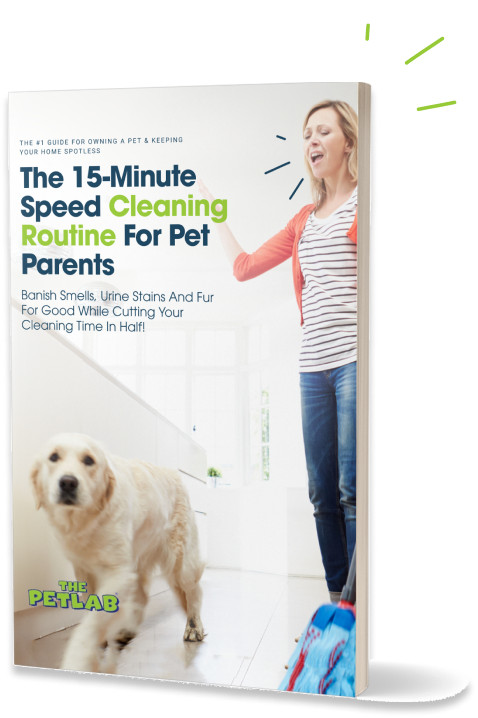My dog has anxiety, and for the longest time, I was in denial about it.
How could my wildly curious, highly adventurous, cheerful pup suddenly develop all sorts of fears—overnight? Why my dog? Does it get better? What do I do now?
If you relate, suspect, or instinctively know your pup has anxiety, you're in the right place.
Fear vs anxiety vs phobia
Before anything else, we should define some key terms.
Fear is a natural defence mechanism to actual threats. It's short-term, focused on specific external stimuli, and meant to ensure survival.
But fear can also veer into abnormal, inappropriate, or excessive territory. To be more precise:
Anxiety is an anticipatory or remembered fear. Here, the threat is perceived or hasn't happened yet (and may never happen), but the dog believes it's unavoidable.
Phobias are extreme, sudden, irrational, and lasting fears. The dog's reaction is over-the-top, interfering with normal behaviour.
Fear, anxiety, and phobias aren't the same, yet they frequently go hand-in-hand. Add unpleasant physiological reactions to stress, and you have a repetitive cycle of worries.
Do all dogs develop anxiety?
Anxiety doesn’t discriminate. It’s an equal-opportunity condition that can affect all breeds at all ages. In fact, a Finnish study found that over 70% of dogs display anxious behaviours. That means most of us reading this article today probably have pets with some form of anxiety! And just like humans, dogs can experience different types of anxieties.
Types of canine anxieties
Here are some of the most common canine anxieties.
🔸 Social anxiety: A fear of strangers (other people and dogs), large crowds, and unknown places. This is typically caused by a lack of socialisation during the puppy's youth.
🔸 Situational anxiety: Stress brought about by something specific. It's associated with unfamiliar or predictable but uncommon situations. The most well-known example is separation anxiety. Other examples include car rides, grooming visits, thunderstorms, and kennelling.
🔸 Rescue anxiety: A complex and multi-faceted type of anxiety experienced by shelter dogs. This often has roots in abuse and neglect, emotional and physical trauma, and, alas, abandonment. This one’s extra heavy on the heart. 💔
🔸 Noise anxiety: It’s an irrational, intense fear triggered by sudden loud sounds. It's the most common dog anxiety and can arise from traumatic events related to loud noises (e.g. shouting in the household), not knowing where the sound is coming from (e.g. thunder), or why it's happening (e.g. the continuous whir of a vacuum cleaner).
🔸 Vet anxiety: The vet experience, plus multiple negative stimuli along the way—being in pain/feeling unwell, a stressful car ride, loud noises on the highway, strangers at the clinic, being handled, and the doctor with the painful needles—snowballs into an all-encompassing fear of vet visits! 💉
🔸 Environmental anxiety: A fear of environmental elements like certain surfaces (e.g. metal grids, slippery floors), stairs, and high places. This one frequently links to memories of an unpleasant incident (e.g. tripping on the stairs) or a lack of exposure at an early age.
🔸 Generalised anxiety disorder (GAD): An anxiety that's always "on" in the background, regardless of the situation. It's quite possibly the worst kind of anxiety because the pupper is constantly uneasy, restless, hyperalert, hypervigilant—and never truly relaxed. He may even be jumpy in his sleep! It sucks, and the causes are multi-factorial. Genetics, chronic stress, traumatic events, overexposure to scary stimuli, and continuous kennelling can all contribute to the development of GAD.
🔸 Age-related anxiety: Fears that appear as a dog gets older. This can be due to age-related aches and pains, poor health (including hearing and vision loss), and doggy dementia.
If not addressed early, fears can increase in scope and gravity until trepidation encompasses additional cues and stimuli.
So, what now?
That was a lot to digest, huh?
One thing's sure: There's nothing quite as heartbreaking, demanding, frustrating, and disheartening (yes, you'll feel all the feels 🥺) as living with an anxious dog. It can and will test your patience. Still, no matter how challenging it is for you, it's almost always worse for your pup.
Fortunately, it's not all doom and gloom!
You can prevent inappropriate fears. You can work with your dog to resolve disproportionate fears through, for example, behaviour modification exercises. There are also science-based strategies and vet-approved techniques, including pharmacological interventions, proven to calm an anxious dog.
In short, your pup is not a lost cause!
Please see your vet for further assistance.


